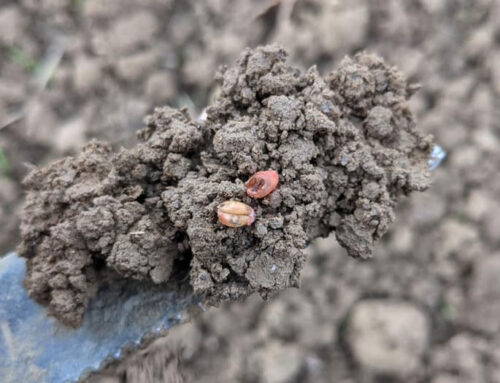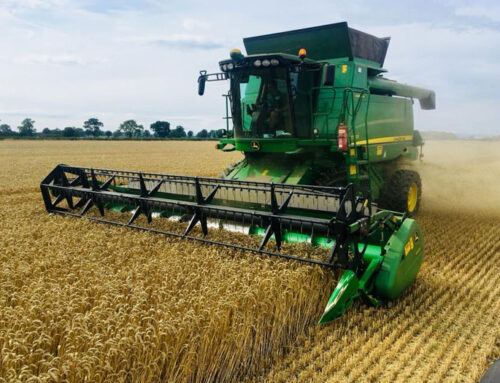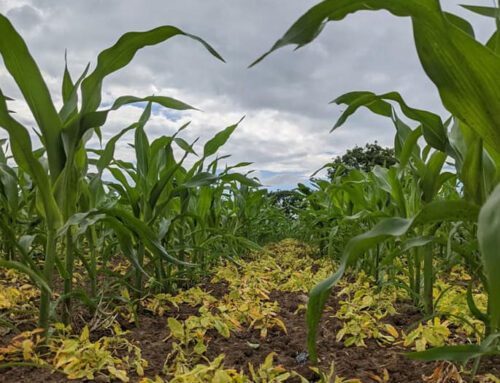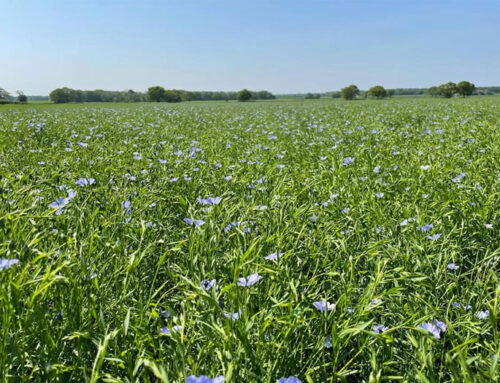The sunny weather and high temperatures have arrived here in Yorkshire this week and for the most are truly welcomed. Not wishing to jinks the season but dare I say it though a little drink wouldn’t go a miss on some of the spring sown crops, and those wheats on sandier land. The sunshine has come at the perfect time for winter cereals as now is the crucial period for grain fill which as we all know means yield, and a step closer towards making a profit. Dry conditions have also meant that T3 fungicide applications have all been applied at the correct stage allowing us to protect against any late ear infections and in some cases another booster jab against yellow rust. These sprays were based around tebuconazole with the addition of some prothioconazole on quality wheats.
Winter barleys are all done and dusted as focus now changes from keeping the crop as green for as long as we possibly can to assessing natural senescence and ultimately the cleanliness of crops. The presence of any grassweeds and broad-leaved weeds lurking in fields will help decide whether pre harvest desiccation will be needed. On the whole crops are clean both from a disease and weed perspective, this combined with the pre ordered sunshine means things look promising. The height of some barley crops is a little unnerving and a calm ripening period would be greatly appreciated so the army of combines can get these off and eliminate the risk of horizontal combining!
The second crop on the list for determining desiccation timing is oilseed rape. These are moving at speed and recent inspections show seeds have turned from translucent to opaque, which ultimately means we are nearly there for glyphosate applications. I know many feel pressured into going too early, early applications can damage seed filling and impact yield. There is also a risk of red seeds in the sample due to uneven ripening, which can lead to rejection and with OSR over £700/t this is not something we want to be faced with! Once the crop canopy resembles the colour of a hares back, take 20 pods from the thicker yield carrying area of the canopy. If at least 2/3 of the seeds have changed from green to brown in at least 15 pods, then the crop is at the earliest stage it can be for spraying with glyphosate. Although this is the textbook description my experience is usually the Leeming principle! Once the first crop is sprayed everyone follows suit.
Fodder beet crops are looking pleasing with my furthest ahead crops just about to meet between the rows. These crops will have a final spray of trace elements and any broad-leaved weed top up sprays that may be needed. As you will be aware I favour the broadacre spray programme which again has served well this year and has keep crops clean, any top up herbicides have been tailored towards volunteer potatoes and grass weeds.
Maize crops continue to race through the growth stages, most of the main post emergence herbicide applications will have been on for 2 weeks so visits are now showing how effective these have been. Overall, apart from a few patches of forever emerging black bind weed results are pleasing. As with beet crops these will get a trace element tonic of magnesium and manganese in the next couple of weeks, I like to do this the latest I dare go through the crops with the sprayer optimising foliar uptake.




